Many of us deal with itchy, irritated skin from time to time. But if inflamed skin has made itself an everyday occurrence, it’s time to break out the big guns. Yes, skin care right after your shower care is essential, but body lotion can only go so far if your in-shower routine is wreaking havoc on your skin. That’s where pine tar soap comes in. Pine tar has been used to nourish skin, soothe irritation, and treat various skin conditions for over 2,000 years. Just a little bar of pine tar soap can lock in moisture and relieve itchiness.
While you could easily add a little pine tar to your next batch of melt-and-pour soap, I recommend making cold process soap. It may take a bit longer to cure, but one batch will last you about a year.
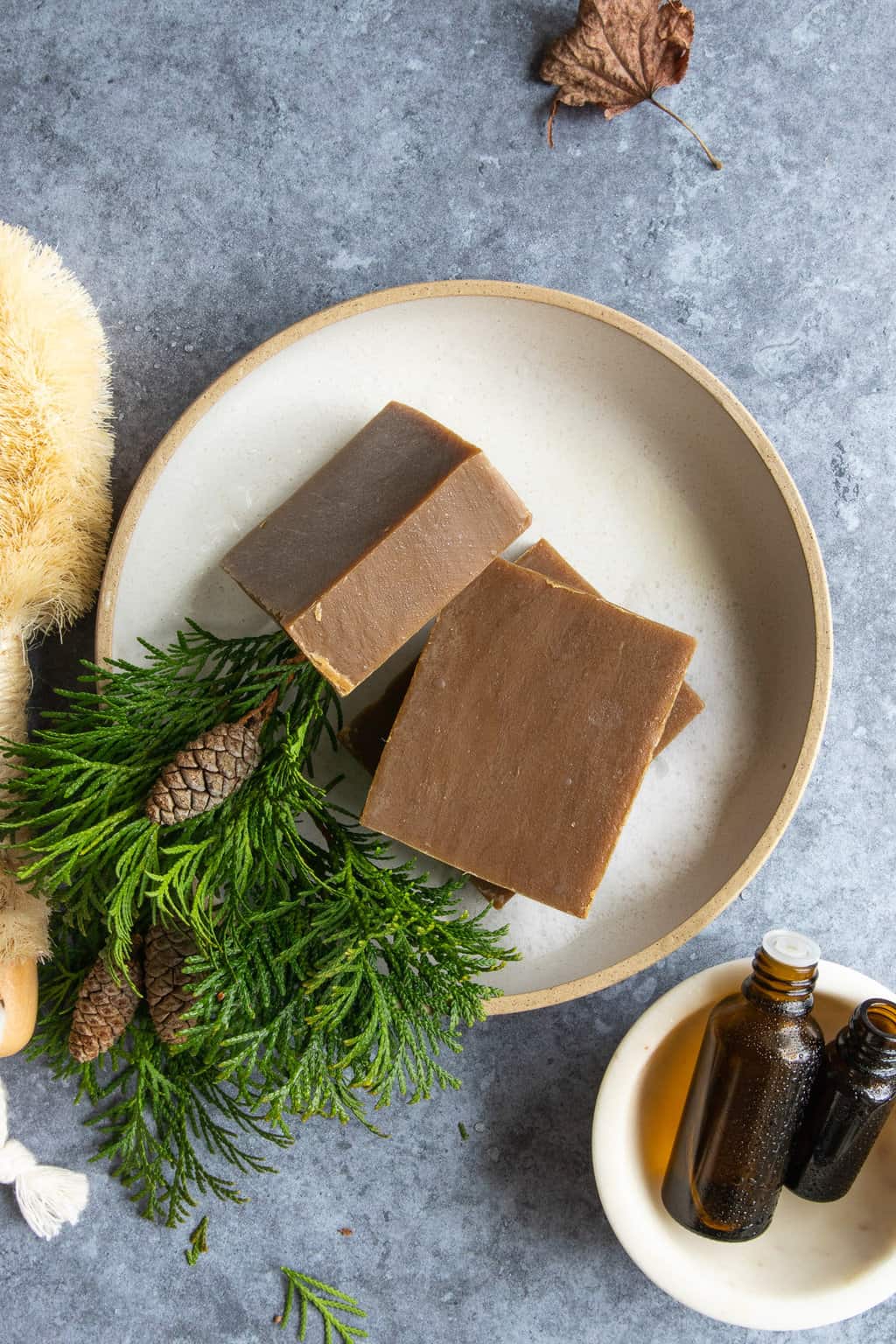
What is pine tar soap?
As the name suggests, pine tar soap is simply a cold-process soap that contains the sappy resin from pine trees (known as pine tar).
Pine tar is made by burning the wood of pine trees in an enclosed container until it breaks down into its component parts: charcoal and tar. The tar is then siphoned off so it can be used for other things, like as a wood preservative, baseball bat sealant, and bath and body treatment—random, right?
The burning process gives pine tar a strong, smoky scent that some people may find a little overpowering. Guys seem to love the smell, though, and it's what makes this Dr. Sasquatch pine tar soap super popular! If you want to tone down the scent, essential oils can be used to give the soap a fresh, clean fragrance and skin-soothing properties to boot.
Benefits of pine tar soap for skin
Pine tar has been shown to be antipruritic, anti-inflammatory, antibacterial, and antifungal, which makes it a suitable treatment for many inflammatory skin conditions [source], such as:
—Eczema
—Psoriasis
—Seborrhoeic dermatitis
—Contact dermatitis
—Poison ivy and poison oak
—Dandruff
And because pine tar is a humectant, it helps lock in moisture, so the skin doesn’t feel as tight and itchy during the winter months.
How to make pine tar soap
Because pine tar soap is known for its soothing and moisturizing properties, it’s usually made with nourishing ingredients, like olive oil, shea butter, almond oil, and chamomile. I don’t use all of those in this recipe, but you’re free to add other herbs, essential oils, or body butters if you’re feeling adventurous. Otherwise, stick with this tried and true recipe for an easy homemade pine tar soap.
Soap Making Tools
—Gloves
—Safety goggles
—Soap pot
—Kitchen scale
—Glass measuring cup
—Mason jar with lid
—Thermometer
—Measuring cups
—Spoons
—Stainless steel whisk*
—Spatula
—Soap mold
*I was in a hurry, so I used a stick blender to make my soap, and it came to trace too quickly. Huge mistake! While using a whisk may take longer, it makes all the difference.
Pine tar soap ingredients
—10 ounces distilled water, at room temperature
—3.8 ounces sodium hydroxide lye
—18 ounces olive oil (60%)
—6 ounces coconut oil (20%)
—3 ounces almond oil (10%)
—3 ounces pine tar (10%)
—0.5 ounces cypress essential oil
—0.25 ounces lemongrass essential oil
—0.2 ounces copaiba essential oil (or feel free to use whatever essential oils you like!)
Step 1 | Make your lye water
Put on your goggles, gloves, and a particle mask, and cover any exposed skin. Then go outside or to a well-ventilated space.
Pour distilled water into a heat-proof glass jar. Step back so that your face isn't directly over the jar, then slowly pour in the lye. The mixture will heat up quickly and give off strong, toxic fumes, so give it a minute or two for it to finish off-gassing.
Using a wooden spoon, gently stir the mixture until the lye dissolves and it turns clear.
Set the lye water aside, and let it cool to about 75°F. While we'd usually use hotter lye water, pine tar needs cooler temperatures to keep it from overcooking.
Step 2 | Melt your oils
While the lye is cooling, measure the coconut, olive, and almond oils in a stainless steel, glass, or ceramic container.
Melt the oils over low heat until they are just barely melted. Set the oils aside and let them come to room temperature as well.
Step 3 | Add the pine tar and essential oils
Once the oils have cooled, add the pine tar and any essential oils into the melted olive oil mixture. Stir well.
Step 4 | Combine the lye and oils
Put on your gloves and safety goggles.
Slowly pour the lye water into the oils, being careful not to let the lye splash your skin. Using a wire whisk, slowly stir the mixture until it forms a batter. This may take anywhere from 3 to 6 minutes, so be patient! And definitely don't use an immersion blender, like I did, or it will come to trace too quickly.
Step 5 | Pour soap into the mold
Once the soap reaches a loose pudding consistency, pour it into a silicone mold and set aside for 72 hours. You don’t need to cover or wrap this soap.
Step 6 | Slice cured soap into bars
After 72 hours, you should be able to remove the soap from the mold. Pine tar soap firms up as it breathes, so it may be a little soft when you first try unmolding it. If it's still too soft, let it sit for another 24 hours, then try again.
Slice into bars, then set the bars somewhere they can breathe without being disturbed. Let them cure for another 6 weeks before using.
Tips for making pine tar soap
Unlike other soaps, this soap works better if you mix the ingredients at low temperatures. If you're in a hurry, put your lye water in the freezer for about an hour to help it cool more quickly.
To help your soap unmold more quickly, add 1 teaspoon of table salt to the water before adding the lye.
Warm your pine tar before adding it to the oils to help it dissolve more easily. To do this, place your pine tar in a small bowl, then place the bowl inside a large bowl. Pour hot water into the large bowl, and let it sit for 5 to 10 minutes.
It's really hard to get pine tar off of everything it touches. I found that the best way to clean spoons, bowls, and measuring cups that have handled pine tar is by tossing them into a large bowl and soaking them in boiling water. Once the tar has melted substantially, you can wipe the equipment down with paper towels and put it in the dishwasher.
Pine Tar Soap FAQs
Can I use pine tar soap on my face?
Pine tar is great for both body and face. If you have acne or another inflammatory skin condition of the face, try using pine tar soap on the affected areas 1 to 2 times a day.
Is pine tar soap good for body odor?
Thanks to its antibacterial properties, pine tar soap can help kill the bacteria that causes body odor.
Is pine tar soap good for pimples?
Yes, pine tar soap may help reduce the appearance of acne. If you have serious breakouts, try adding other antibacterial essential oils for acne to your soap, like tea tree, lavender, and rosemary.
Can I use pine tar soap to wash my hair?
Yes! Pine tar soap can even be used as a shampoo bar. It's gentle enough to clean hair and soothe your scalp at the same time.
Reference:
Barnes TM, et al. Topical pine tar: history, properties and use as a treatment for common skin conditions. Australas J Dermatol. 2017.
47
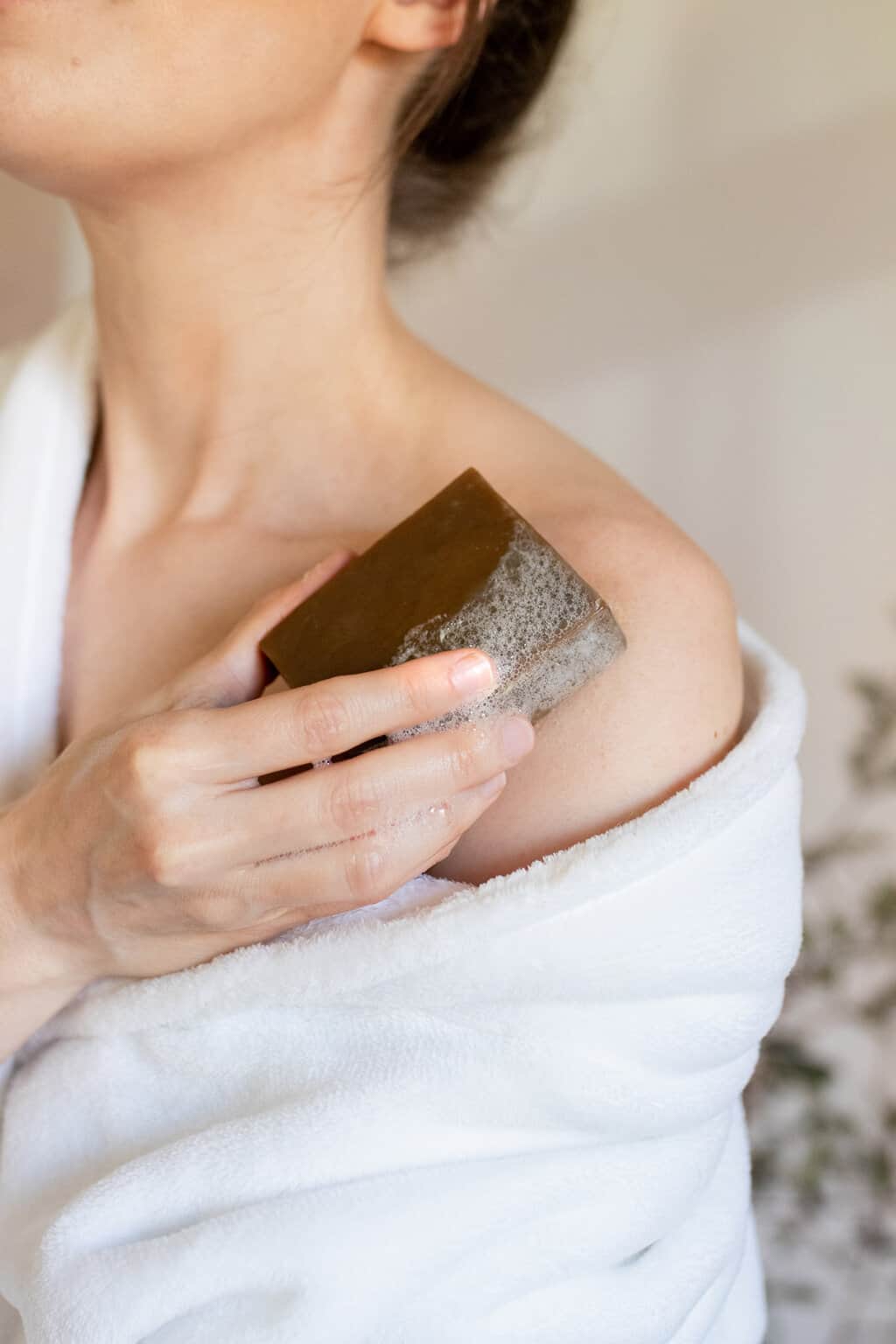

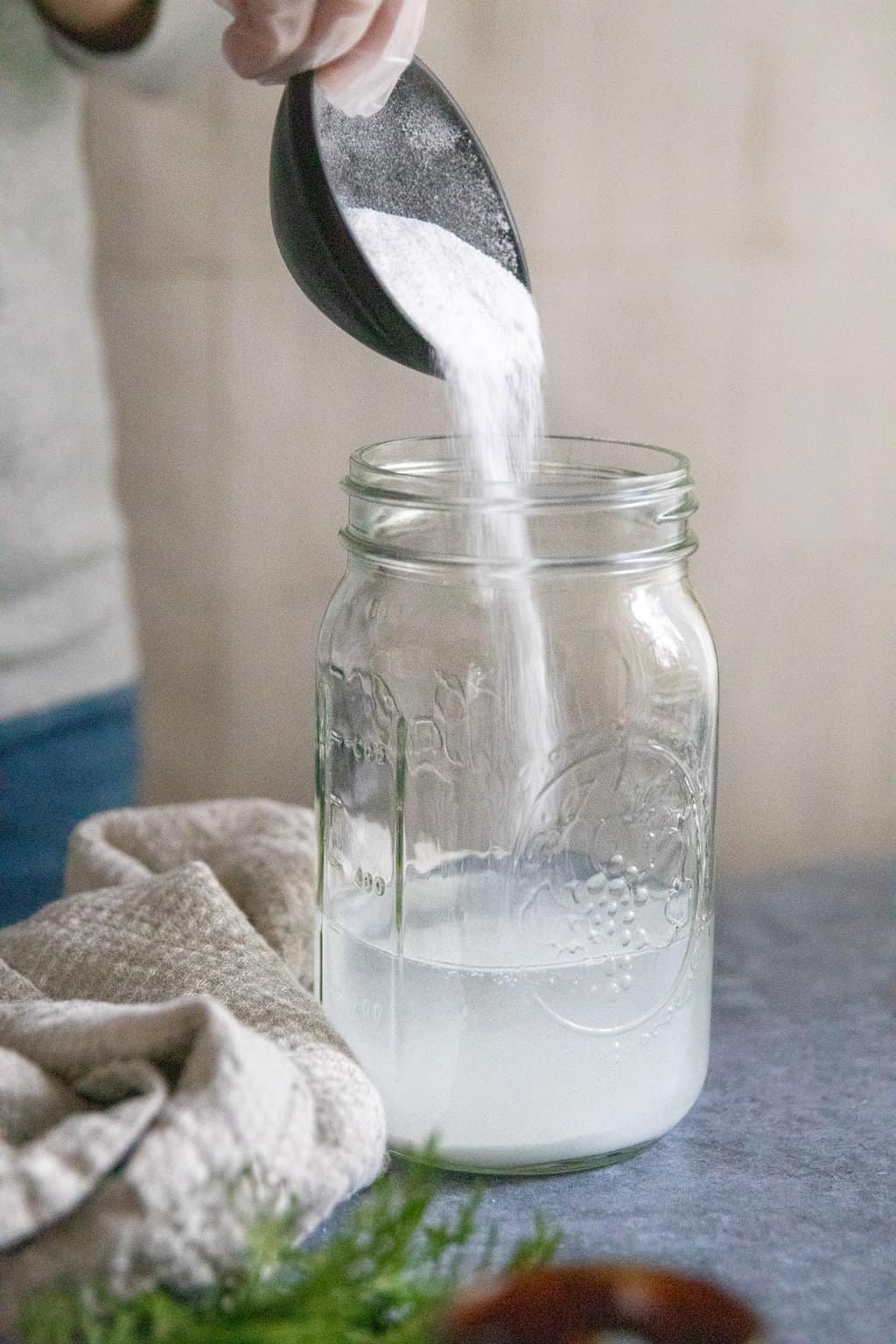
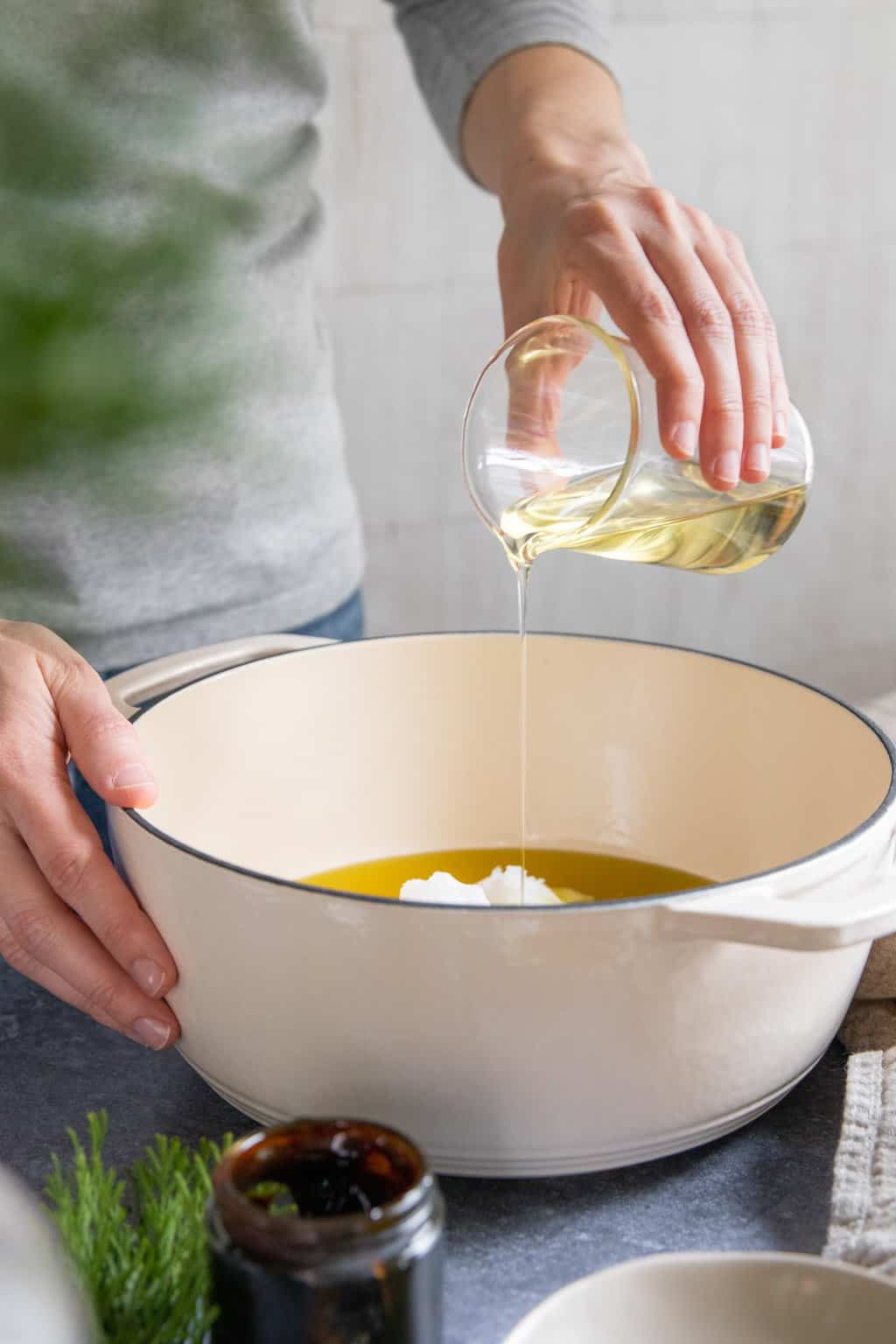
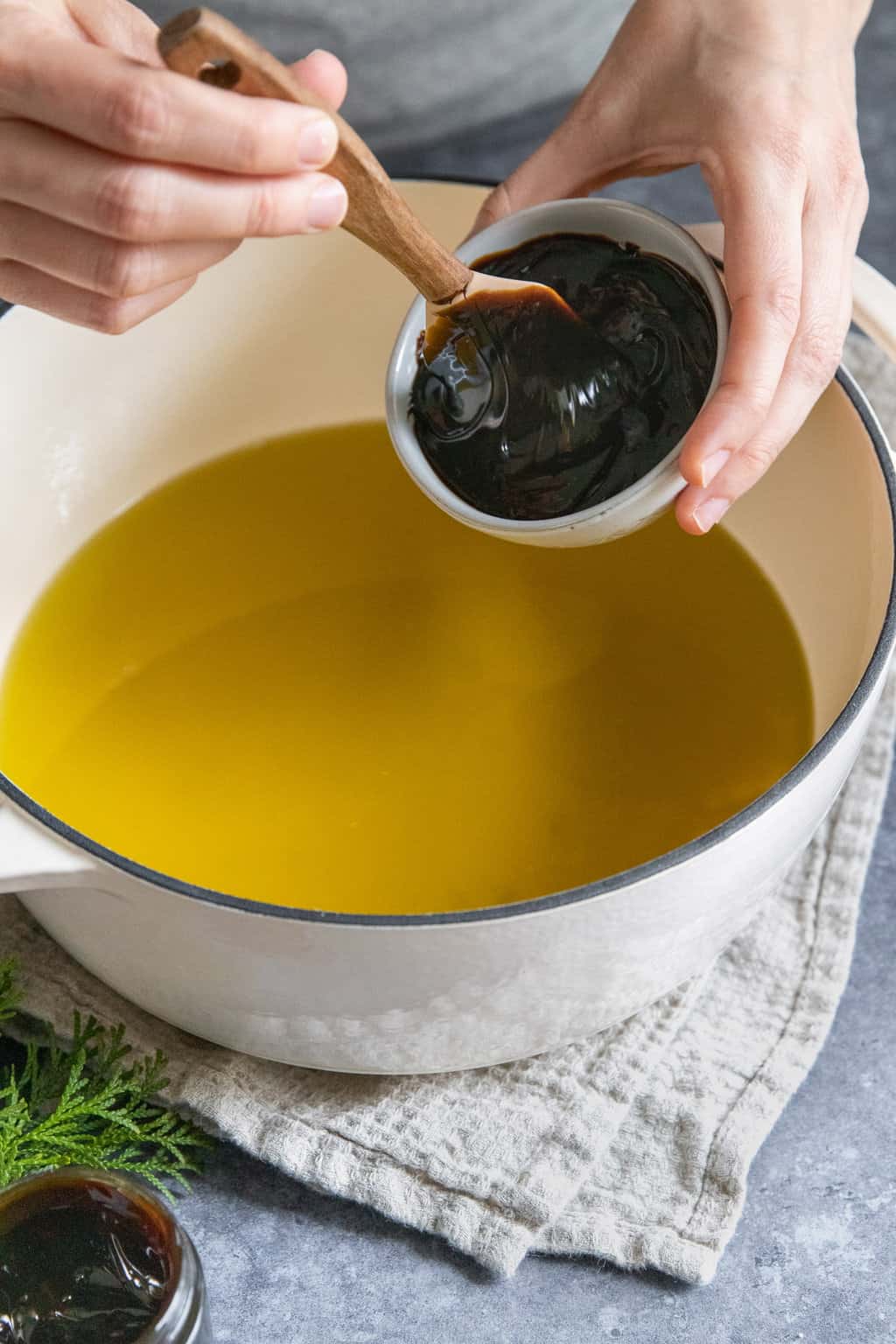
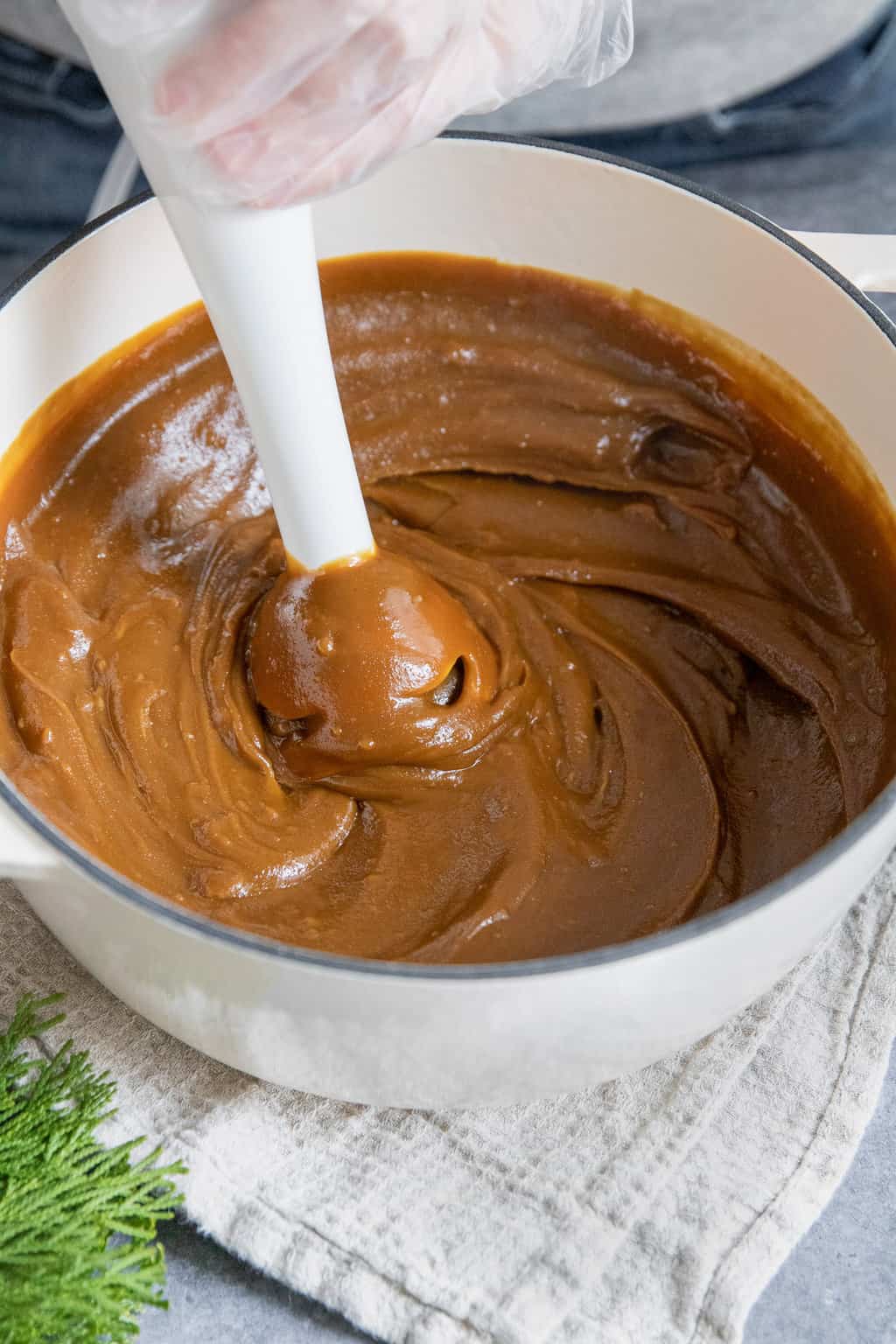
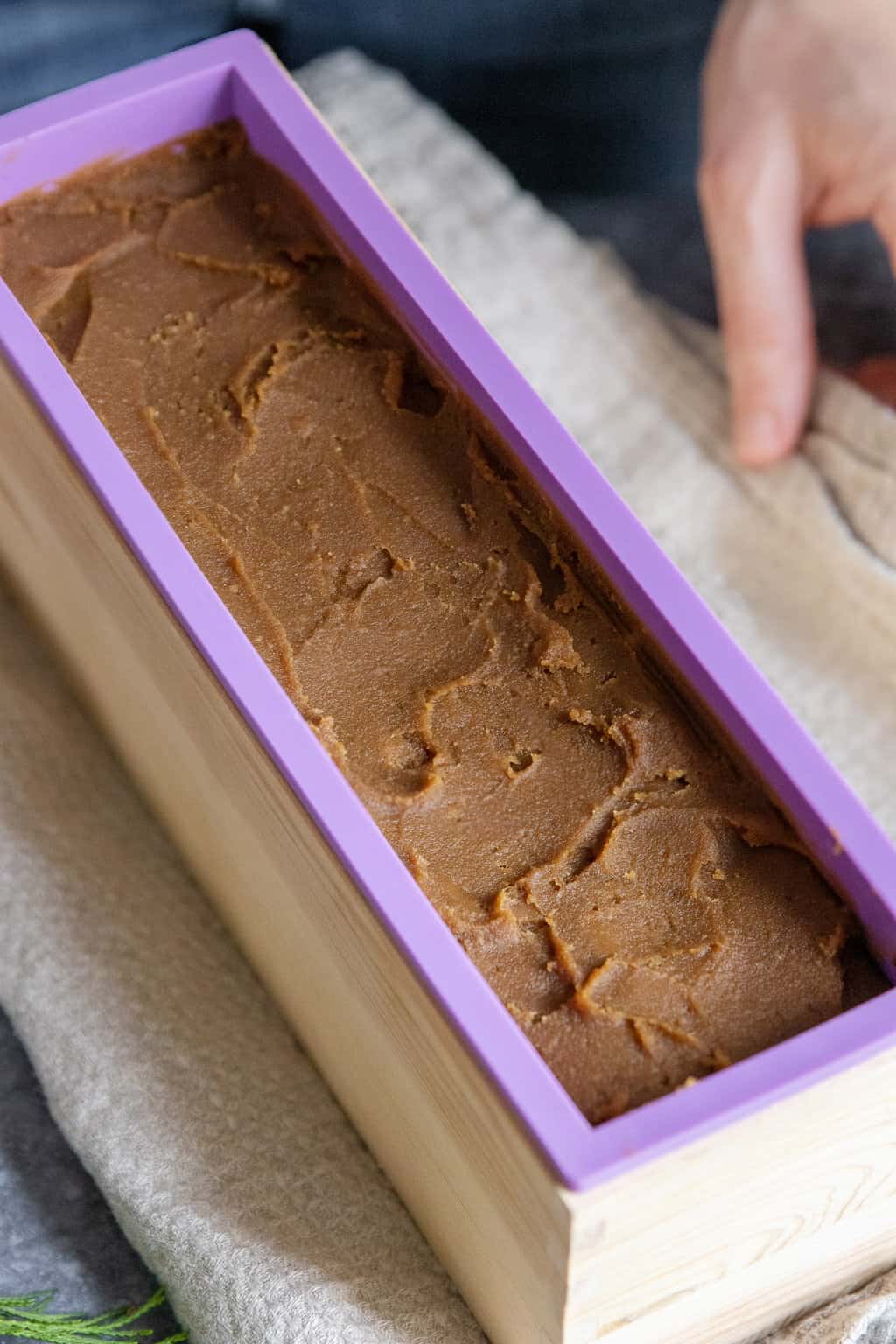
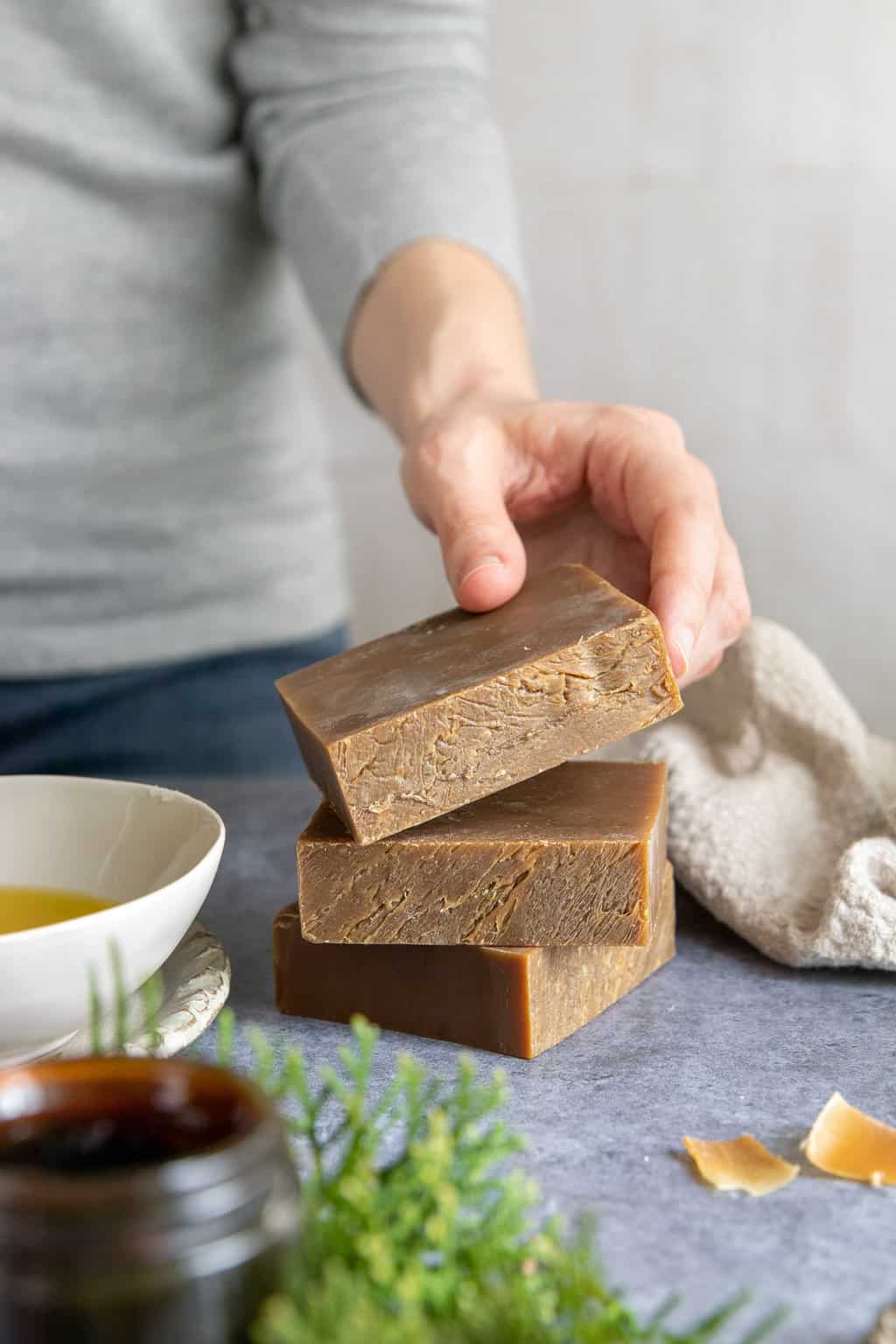


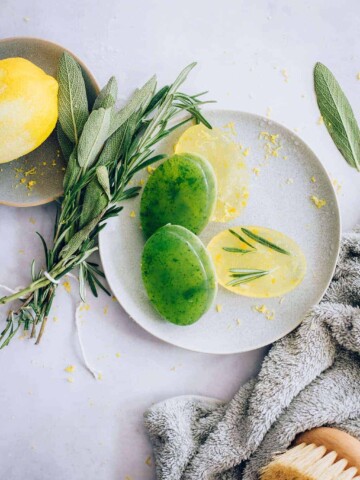

Leave a Comment